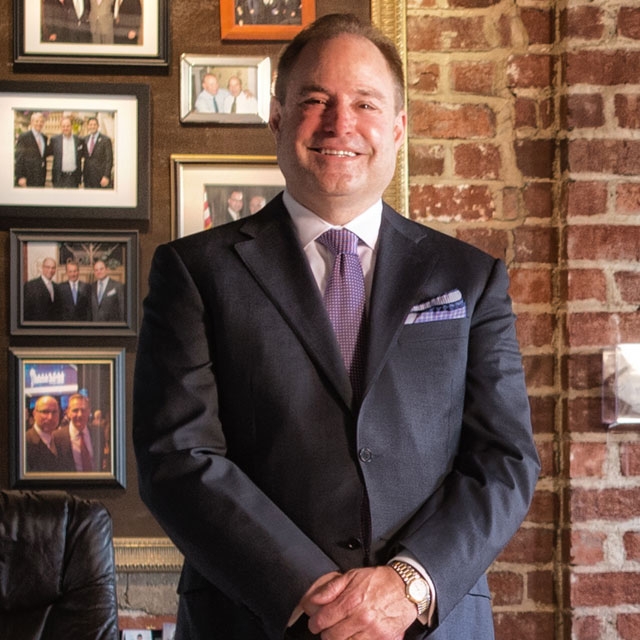The Scheme
Dadante, a former casino host who touted his alleged ties to Donald Trump, was charged by the Securities and Exchange Commission in April 2006 on allegations that he was running a $50 million Ponzi scheme that touted outsized returns through supposedly low-risk trading strategies with his investment company. Investors were told that Dadante had a connection with a Goldman Sachs executive who provided him with exclusive access to initial public offerings - supposedly resulting in guaranteed annual returns ranging from 10% to 20%. In total, Dadante raised approximately $50 million from over 100 investors. The Court subsequently appointed Mark Dottore as Receiver.
However, Dadante's exclusive Goldman Sachs connection was a complete fabrication. Instead, the promised above-average returns were possibly only by paying existing investors through incoming investor funds - the classic hallmark of a Ponzi scheme. After criminal charges were filed in 2007, Dadante was sentenced to a 13-year prison term.
The Receivership and Recovery
While Dadante took in approximately $50 million from investors, the fact that his scheme lasted for several years while paying out 10% to 20% interest resulted in a corresponding decrease in the net losses suffered by investors. In fact, after adjusting for interest payments to investors, Dottore estimated that the total losses due to Dadante's fraud were $28 million.
Dottore, who is not a lawyer, embarked on a campaign spanning nearly a decade to recover funds for Dadante's victims. This included assisting investors in filing tax refunds for taxes paid on illusory profits as well as recovering more than $8 million through a settlement with Dadante. The cornerstone of this campaign, however, was litigation filed against Ferris Baker Watts ("Ferris"), the former brokerage house where Dadante was a prominent client. There, Dadante enlisted the services of a broker to purchase and illegally manipulate the shares of Innotrac Corp., a lightly traded technology company. Even though Dadante's purchases raised eyebrows among Ferris employees, the brokerage ultimately extended him nearly $19 million to finance the trading. Dadante eventually accumulated several million shares of Innotrac - making him a 34% owner of the company.
After the scheme was exposed, Dottore seized the 4.3 million Innotrac shares as part of the receivership estate. However, Dadante had also accrued a significant margin balance to purchase those shares which remained after the receivership and led to threats to redeem the debt and thus trigger a sale of the Innotrac shares. After the Receiver was able to ward off a margin call, he sued Ferris based on its relationship with Dadante and ultimately reached a settlement in which Ferris agreed to pay $7.2 million in cash and extinguish Dadante's multi-million dollar margin debt and thus retain the Innotrac shares. But the jubilation of that settlement would be short-lived.
By the time of that settlement, Dottore had already faced the ire of victims who argued that the Ferris lawsuit was ill-advised and simply an attempt to inflate already-inflated bills. As Judge Boyko recounted in his Order, investors moved to terminate the receivership in 2007 citing outsized expenses and dismal recoveries. After a court-ordered accounting, investors moved to liquidate the receivership based on, among other things, the argument that the Innotrac stock "lacked any real value." This included, among other things, the following motions filed in 2007:
- Regalbuto Plaintiffs’ Motion to Show Cause Why Receiver Mark Dottore Should Not Be Held in Contempt (Sep. 11, 2007);
- Regalbuto Plaintiffs’ Motion to Remove Receiver for Cause and Show Cause Why Receiver Should Not Be Held In Contempt (Aug. 1, 2007);
- Regalbuto Plaintiffs’ Motion for Further Accounting (July 11, 2007);
- Regalbuto Plaintiffs’ Motion for Accounting, (May 3, 2007); and
- Motion to Terminate Receivership, (Jan. 26, 2007).
As Judge Boyko observed, a 2007 liquidation "would have resulted in a loss to all investors of most of their initial investments."
This crusade continued outside the courtroom and in local newspapers, with one 2008 news article featuring an investor comment that "the judge and Dottore have it all screwed up." Another investor apparently created a website with "letters and harsh opinions on..Dottore."
One main source of investors' ire following the Ferris settlement? That Dottore refused to immediately liquidate the Innotrac holdings at the then-prevailing prices that would have equaled a sizeable recovery. Around 2009, the price of those shares ranged from $2 to $4 per share - meaning that the Innotrac position fluctuated from $8 million to $17 million. Instead, Dottore believed that Innotrac's valuation had been unfairly depressed as a result of the Ferris litigation and its Dadante ties. The settlement also came at the onset of the economic downturn beginning in 2008 which also contributed to its lower valuation. Dottore resisted attempts to liquidate the Innotrac shares until 2013 when he sold for $8.20 a share for total proceeds of $35.4 million.
A "Success Fee?"
Dottore's lawyers disclosed at a 2014 hearing that he had recovered $47 million in cash in addition to securing forgiveness of $12 million in Dadante's debts, which would allow investors to recover their cumulative allowed losses of approximately $28 million as well as at least an additional 10%. After Dottore's lawyers were directed by Judge Boyko to research whether a "success fee" was warranted , the matter was taken under advisement.
In light of the "unprecedented recovery," the Court asked the Magistrate Judge for a Report and Recommendation as to whether the Receiver was entitled to any additional compensation. In that R&R, the Magistrate Judge weighed multiple factors including the "complexity of problems faced, the benefits to the receivership estate, the quality of work performed, and the time records presented." Finding that each of the factors weighed in favor of additional compensation, the Magistrate Judge used a 30% increase in the Receiver's "low hourly rate" to arrive at an additional compensation award of $1.2 million.
Some investors objected to the Magistriate Judge's R&R, claiming that the Receiver was not entitled to any additional compensation and that any compensation should be paid to those investors. Judge Boyko concluded that those objections were without merit, finding both that the Receiver's extraordinary result as well as relevant caselaw supported an award of additional compensation. Notably, the Court discerned that a substantial portion of the Innotrac stock had been purchased with margin debt - not investor funds - and thus could not be classified as profits realized from returns on investor funds. The Court further noted that:
This receivership faced serious obstacles from the beginning which the Receiver moved to counter, including the attempts by the various brokerage firms to call in the margin debt and force the sale of Innotrac stock while its value was low. Many of the investors brought suit against the Receiver and other investors, while some investors demanded he sell the stock early in the case when its value was minimal. Furthermore, and perhaps more damaging, were the efforts of some investors advocating that the Court find the IPOF Fund was not a limited partnership and to end the Receivership. This potentially would have exposed individual investors to liability for margin debts owed to the various brokerage firms. The Receivers efforts directly thwarted these ill-conceived efforts of some investors. It is not unusual for investors to disagree with a Receiver's strategy in receiverships, but it is wholly a different matter for the Receiver to save many investors from themselves.
Furthermore, there are accounts of contentious hearings, physical confrontations and conduct aimed at thwarting the Receiver's efforts to maximize the value of the Receivership by some of the same investors on whose behalf the Receiver was working.
The Court ultimately adopted the Magistrate Judge's R&R in part, finding that the Receiver was entitled to additional compensation but determining that the amount should be based on the upper end of comparable fees according to a report previously commissioned by the Court. In recalculating the Receiver's fees for the entire receivership based on that increased rate, the Court calculated an award of $2.424 million to the Receiver.
Under Appeal
For now, Dottore's bonus will have to wait as multiple groups of investors appealed the Order. Whether or not the additional award is upheld, it will not change the extraordinary outcome that Dottore and his team were able to achieve. Ponzitracker has already recognized that the recovery is likely the highest in known Ponzi cases, even among esteemed company such as the Madoff and Rothstein cases.
A copy of Judge Boyko's Order is below:
Dottore Order by jmaglich1 on Scribd
 FBI agents executing a search warrant at Bennett's Maryland home last year also made an unlikely discovery when they found instructions for placing people under a "Beef Tongue Shut Up Hoodoo Spell" along with personal information of several SEC attorneys working on Bennett's case. Those agents also found lids of Mason jars in Bennett's freezer that contained the initials of those SEC attorneys, as evidenced by a picture taken from the affidavit provided by one of the FBI agents. That affidavit also stated that handwritten notes on "Dawn J. Bennett-styled stationary" contained directions "such as slitting open animal tongue, the instructions called on the spell-caster to state the name of the individual on whom to cast the spell followed by "I cross and cover you[,] come under my command[.] I command you to hold your tongue."
FBI agents executing a search warrant at Bennett's Maryland home last year also made an unlikely discovery when they found instructions for placing people under a "Beef Tongue Shut Up Hoodoo Spell" along with personal information of several SEC attorneys working on Bennett's case. Those agents also found lids of Mason jars in Bennett's freezer that contained the initials of those SEC attorneys, as evidenced by a picture taken from the affidavit provided by one of the FBI agents. That affidavit also stated that handwritten notes on "Dawn J. Bennett-styled stationary" contained directions "such as slitting open animal tongue, the instructions called on the spell-caster to state the name of the individual on whom to cast the spell followed by "I cross and cover you[,] come under my command[.] I command you to hold your tongue."
